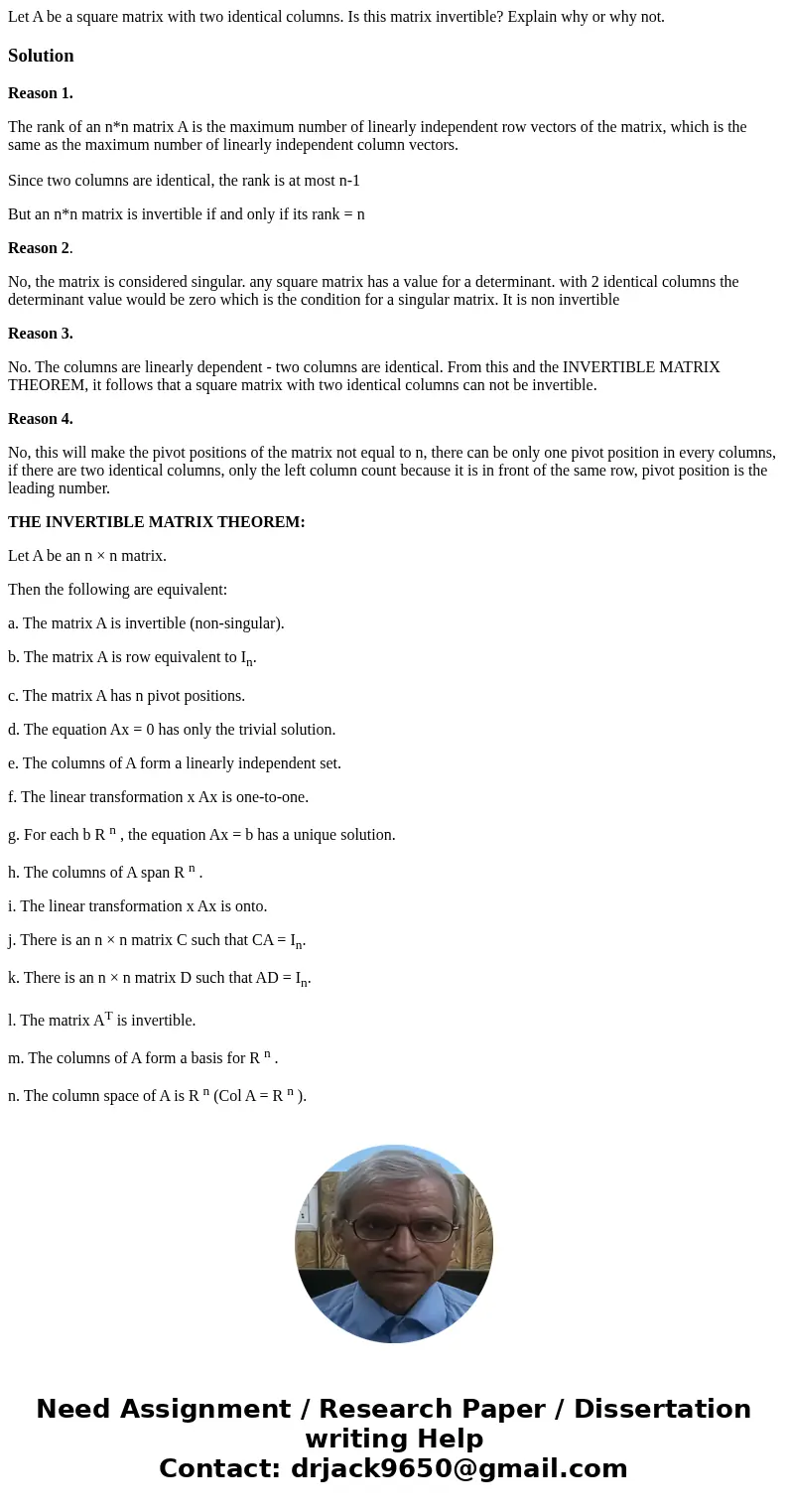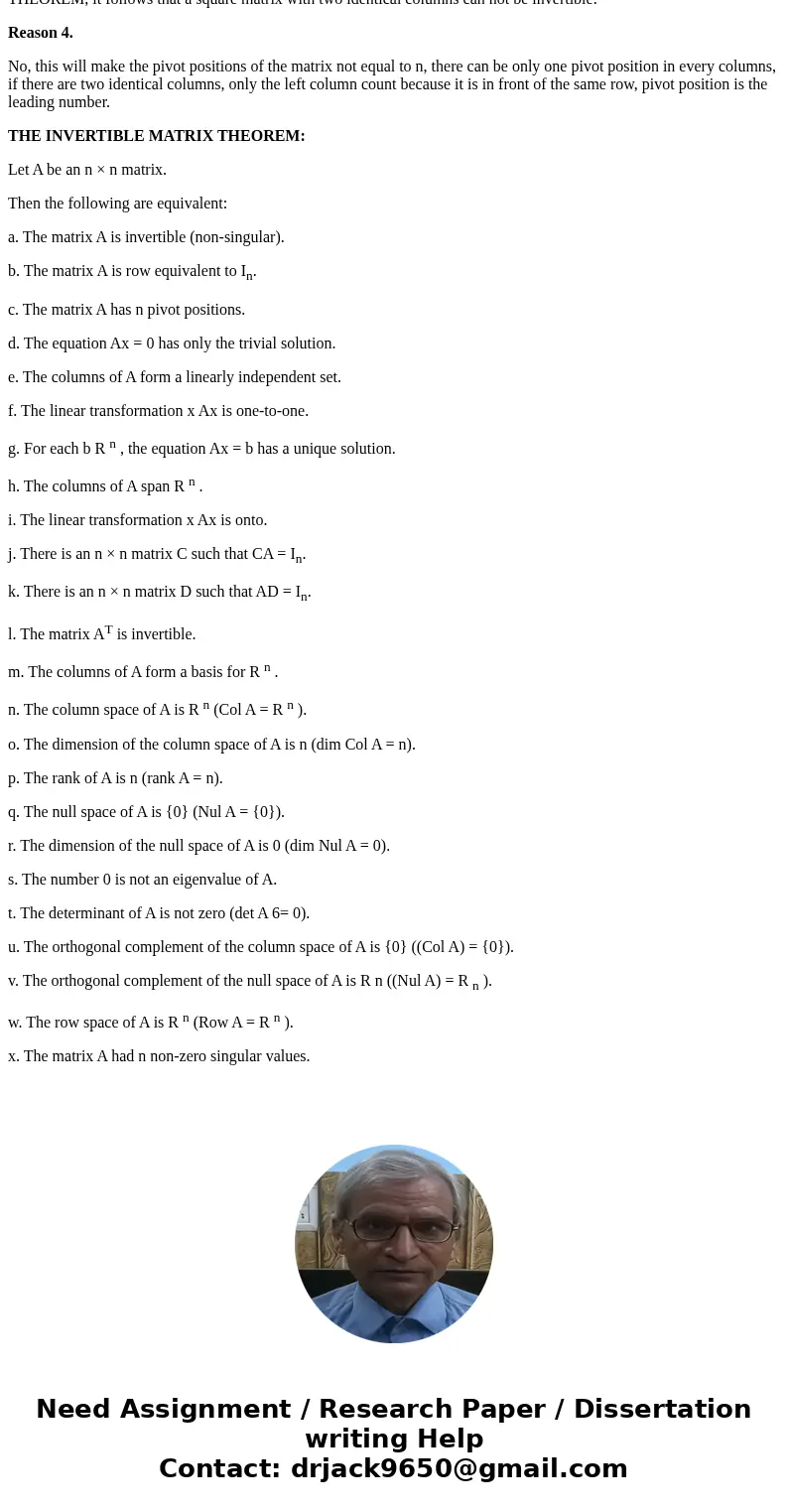Let A be a square matrix with two identical columns Is this
Solution
Reason 1.
The rank of an n*n matrix A is the maximum number of linearly independent row vectors of the matrix, which is the same as the maximum number of linearly independent column vectors.
Since two columns are identical, the rank is at most n-1
But an n*n matrix is invertible if and only if its rank = n
Reason 2.
No, the matrix is considered singular. any square matrix has a value for a determinant. with 2 identical columns the determinant value would be zero which is the condition for a singular matrix. It is non invertible
Reason 3.
No. The columns are linearly dependent - two columns are identical. From this and the INVERTIBLE MATRIX THEOREM, it follows that a square matrix with two identical columns can not be invertible.
Reason 4.
No, this will make the pivot positions of the matrix not equal to n, there can be only one pivot position in every columns, if there are two identical columns, only the left column count because it is in front of the same row, pivot position is the leading number.
THE INVERTIBLE MATRIX THEOREM:
Let A be an n × n matrix.
Then the following are equivalent:
a. The matrix A is invertible (non-singular).
b. The matrix A is row equivalent to In.
c. The matrix A has n pivot positions.
d. The equation Ax = 0 has only the trivial solution.
e. The columns of A form a linearly independent set.
f. The linear transformation x Ax is one-to-one.
g. For each b R n , the equation Ax = b has a unique solution.
h. The columns of A span R n .
i. The linear transformation x Ax is onto.
j. There is an n × n matrix C such that CA = In.
k. There is an n × n matrix D such that AD = In.
l. The matrix AT is invertible.
m. The columns of A form a basis for R n .
n. The column space of A is R n (Col A = R n ).
o. The dimension of the column space of A is n (dim Col A = n).
p. The rank of A is n (rank A = n).
q. The null space of A is {0} (Nul A = {0}).
r. The dimension of the null space of A is 0 (dim Nul A = 0).
s. The number 0 is not an eigenvalue of A.
t. The determinant of A is not zero (det A 6= 0).
u. The orthogonal complement of the column space of A is {0} ((Col A) = {0}).
v. The orthogonal complement of the null space of A is R n ((Nul A) = R n ).
w. The row space of A is R n (Row A = R n ).
x. The matrix A had n non-zero singular values.


 Homework Sourse
Homework Sourse